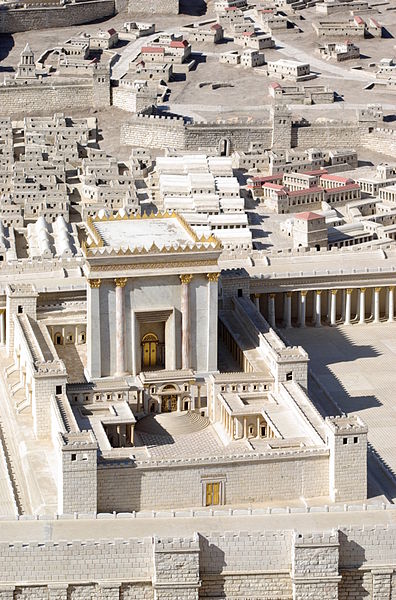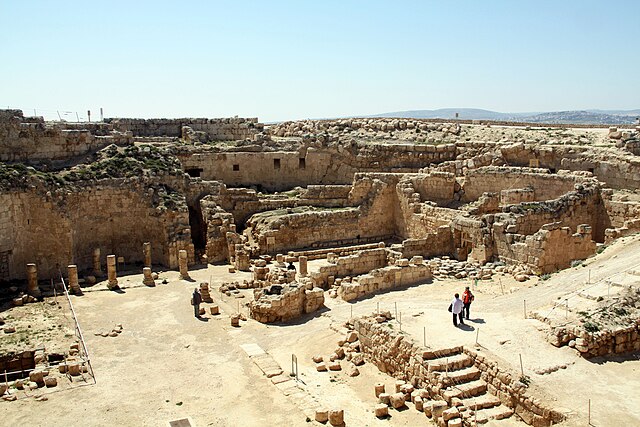Herodian architecture is a style of classical architecture characteristic of the numerous building projects undertaken during the reign of Herod the Great, the Roman client king of Judea. Herod undertook many colossal building projects, most famously his reconstruction of the Temple in Jerusalem. Many of his structures were built upon comparable, previous Hasmonean buildings and most of his have, in their turn, vanished as well.
The Enclosure of the Cave of the Patriarchs, Hebron. This large rectangular enclosure around the famous caves is the only Herodian structure to survive fully intact.
Aerial view of the acropolis of Herodium
Detail of the distinctive pattern of Herodian stone-dressing as seen in the Western Wall Tunnel.
Model of Herod's Temple (renovation of the Second Temple) in the Israel Museum.
Herodion, Herodium (Latin), or Jabal al-Fureidis is an ancient fortress located 12 kilometres (7.5 mi) south of Jerusalem and 5 kilometres (3.1 mi) southeast of Bethlehem. It is located between the villages of Beit Ta'mir, Za'atara and Jannatah. It is identified with the site of Herodium, built by King of Judea Herod the Great between 23 and 15 BCE. Herodium is 758 meters (2,487 ft) above sea level.
Aerial view of the acropolis of Herodium
Upper Herodium, looking south. The columns to the left near the wall belong to the peristyle hall.
"Tel Hordos" area in 1943, in the Survey of Palestine
Remains of the eastern round tower







